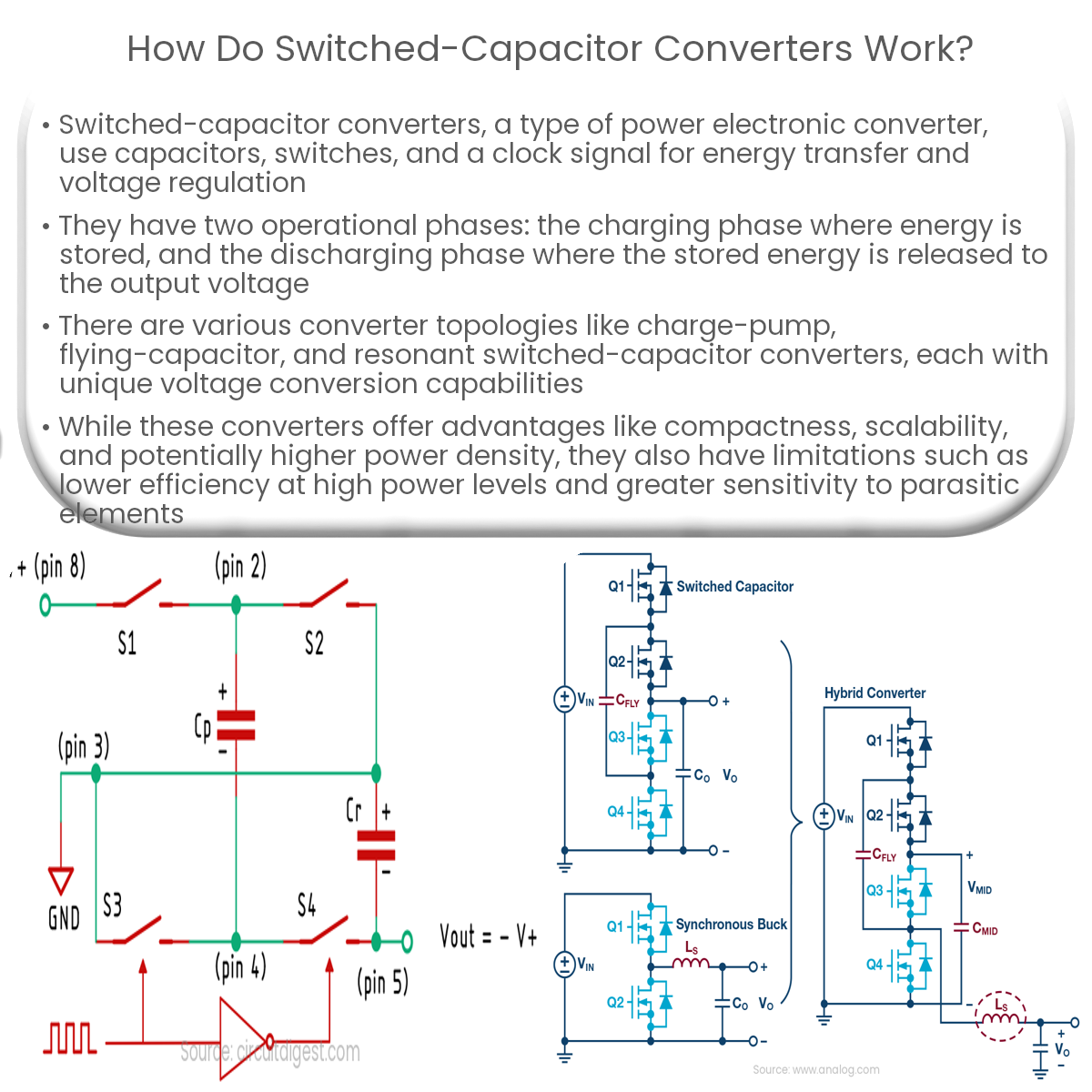Switched-capacitor converters use capacitors and switches to transfer energy between voltage levels, enabling voltage regulation in compact, low-power devices.
Introduction to Switched-Capacitor Converters
Switched-capacitor converters are a type of power electronic converter that use capacitors, switches, and a clock signal to transfer energy and achieve voltage regulation. Unlike traditional inductor-based converters, they provide a compact and efficient solution for various applications, including low-power devices and integrated circuits. This article will explore the underlying principles and operation of switched-capacitor converters.
Basic Operation of Switched-Capacitor Converters
Switched-capacitor converters consist of two primary components: capacitors and switches. The capacitors store energy and transfer it between different voltage levels, while the switches control the flow of energy by connecting and disconnecting the capacitors in different configurations. The converter’s operation is synchronized by a clock signal, which determines the switching frequency and timing.
There are two main phases in the operation of a switched-capacitor converter: the charging phase and the discharging phase. During the charging phase, the capacitors are connected in parallel to the input voltage source, allowing them to store energy. In the discharging phase, the capacitors are reconnected in series or other configurations, releasing the stored energy to the output voltage, which can be either higher or lower than the input voltage, depending on the converter’s topology.
Topologies of Switched-Capacitor Converters
There are various topologies of switched-capacitor converters, including:
- Charge-pump converters: These converters use a single capacitor and two switches to generate either a positive or negative output voltage, depending on the switch states. They are commonly used for voltage doubling or inversion applications.
- Flying-capacitor converters: These converters employ multiple capacitors and switches to generate a range of output voltage levels. They offer a higher efficiency than charge-pump converters but require more complex control schemes.
- Resonant switched-capacitor converters: These converters utilize the resonant behavior of capacitors and inductors to achieve zero-voltage switching, resulting in lower power losses and higher efficiency.
Advantages and Limitations of Switched-Capacitor Converters
Switched-capacitor converters offer several advantages over traditional inductor-based converters, such as:
- Compact size and reduced weight due to the absence of magnetic components
- Scalability to high-frequency operation, which reduces the size of passive components
- Relatively simple design and implementation, especially for low-power applications
- Lower cost and potentially higher power density
However, there are some limitations to using switched-capacitor converters, including:
- Lower efficiency compared to inductor-based converters, particularly at high power levels
- Higher output voltage ripple due to the inherent charge-transfer process
- Greater sensitivity to parasitic elements and component tolerances, which can affect performance
In summary, switched-capacitor converters offer a compact and efficient alternative to traditional inductor-based converters, particularly for low-power applications and integrated circuits. They operate through capacitors and switches, controlled by a clock signal, to transfer energy and regulate voltage. Various topologies provide different voltage conversion capabilities, while the technology also has some limitations that must be considered in specific applications.


